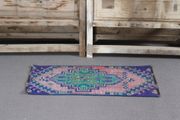Turkish Kilim Pillow, Kilim Cushion Sham, Outdoor Patio Pillow Case, Antique Pillows, Aesthetic Pillow Cover, 16"x16" Beige Pillow Cover
Office Chair Pillow, Kilim Pillow Cover, Home Decor Pillow, Turkish Kilim Pillow, Outdoor Throw Pillow, 16"x16" Blue Cushion Case
16"x16" Beige Cushion Case, Southwestern Pillow Sham, Kilim Pillow Cover, Turkish Pillow, Handmade Rug Seat Pillow Case, Vintage Pillow
Antique Pillows, Handmade Kilim Cushion, 16"x16" Blue Pillow Sham, Vintage Pillow Cover, Kilim Pillow Cover
Turkish Pillow, 16"x16" Green Pillow Cover, Christmas Cushion Case, Crochet Pattern Pillow Cover, Vintage Kilim Throw Pillow, Gift Pillow
Throw Kilim Pillow, Boho Pillow, One Of A Kind Cushion, Outdoor Throw Pillow Case, 16"x16" Beige Pillow Case, Gift Pillow
Decorative Throw Cushion Case, Boho Pillow, Vintage Kilim Throw Pillow, Interior Designer Pillow, 16"x16" Beige Pillow Case
Sofa Bolster Pillow Sham, Boho Pillow, Pillow for Couch, Living Room Throw Cushion, 16"x16" Beige Pillow, Turkish Kilim Pillow
Crochet Pattern Cushion, Bolster Pillow Case, 16"x16" Red Pillow Case, Kilim Pillow Cover, Kilim Pillow, Home Decor Pillow
16"x16" Blue Pillow Sham, Kilim Pillow, Decorative Pillow Case, Patio Pillow Sham, Kilim Cushion Sham, Boho Pillow Sham Cover
Meditation Pillow, Vintage Kilim Pillow, 16"x16" Beige Pillow Case, Handmade Kilim Cushion, Floor Cushion, Home Decor Pillow
Handmade Throw Pillow Sham, Pillow for Sofa, Ethnical Kilim Rug Pillow, Handmade Kilim Cushion, 16"x16" Red Pillow Case
Throw Kilim Pillow, Bohemian Cushion Cushion Case, Turkish Kilim Pillow, Gift Pillow, Colorful Cushion, 16"x16" Blue Pillow Cover
Boho Throw Cushion Case, Vintage Pillow, Handmade Kilim Cushion, 16"x16" Beige Pillow Cover, Vintage Kilim Throw Pillow, Muted Pillow Case
Turkish Bench Pillow, Pillow for Couch, Gift Pillow, Tribal Pillow Cover, 16"x16" Blue Pillow Sham, Vintage Kilim Pillow
Turkish Pillow, Turkish Kilim Pillow, 16"x16" Yellow Cushion Cover, Kilim Pillow, Rustic Cushion Cover, Outdoor Throw Pillow Cover
Kilim Cushion Sham, 16"x16" Blue Pillow Sham, Antique Pillows, Personalized Gift Pillow Pillow Case, Vintage Kilim Throw Pillow
Boho Pillow Sham Cover, Antique Pillows, Turkish Bench Cushion Cover, 16"x16" Beige Cushion, Ethnical Kilim Rug Pillow
Kilim Pillow, Handmade Rug Seat Pillow Cover, 16"x16" Orange Cushion Cover, Gift Pillow, Vintage Kilim Throw Pillow
Neutral Pillow Cover, Kilim Cushion Sham, Interior Designer Pillow, Wholesale Pillow, Boho Pillow Sham Cover, 16"x16" Green Cushion Cover
Turkish rugs are not merely floor coverings; they are masterpieces woven with centuries of tradition, culture, and unparalleled craftsmanship. Renowned for their intricate designs, vibrant colors, and exceptional quality, Turkish rugs hold a special place in the world of interior decor. Join us as we delve into the rich history and unique qualities that make Turkish rugs truly special, and discover why these timeless treasures continue to captivate and inspire.
Turkish rugs, also known as Anatolian rugs, have a storied history that dates back to ancient times. Originating from the Anatolian region of Turkey, these rugs are celebrated for their artistry, durability, and cultural significance. Each rug is a reflection of the weaver’s skill and creativity, often incorporating symbolic motifs and traditional patterns that tell stories of the region’s rich heritage.
Let's explore the distinctive qualities that set Turkish rugs apart and make them highly coveted among collectors and enthusiasts alike.
1. Traditional Weaving Techniques
Turkish rugs are hand-knotted using traditional weaving techniques that have been passed down through generations. The most common knot used is the Turkish or Ghiordes knot, known for its strength and durability. The meticulous hand-knotting process ensures that each rug is unique and of exceptional quality, with intricate patterns and designs that stand the test of time.
2. Rich Cultural Heritage
Turkish rugs are steeped in the cultural heritage of Anatolia, with designs that often reflect the artistic traditions and beliefs of the region’s diverse communities. The motifs and patterns used in Turkish rugs can convey meanings related to protection, fertility, and prosperity, making these rugs not just decorative pieces but also symbols of tradition and history.
3. Intricate Designs and Patterns
Turkish rugs are known for their elaborate designs and intricate patterns, which vary depending on the region and weaving tradition. The designs often feature geometric motifs, stylized floral patterns, and medallions, meticulously woven with a harmonious blend of colors that create a visual feast for the eyes.
4. High-Quality Materials
Authentic Turkish rugs are made from natural materials such as wool, cotton, and silk, which are carefully selected for their durability and aesthetic qualities. The use of high-quality materials ensures that Turkish rugs are not only beautiful but also resilient, making them suitable for both decorative and practical purposes.
Kilim Rugs: The Artful Tapestry of Tradition and Beauty
Kilim rug is not just floor coverings; they are exquisite works of art that carry with them a rich history and cultural heritage. Originating from various regions including Turkey, Iran, the Caucasus, and Central Asia, these flat-woven textiles are renowned for their intricate designs, vibrant colors, and versatile use in both traditional and modern interiors. Join us as we explore the captivating world of Kilim rug, uncovering their unique characteristics, and discovering creative ways to incorporate these timeless treasures into your home decor.
Kilim rugs, also known as "flatweaves," are hand-woven textiles made without a pile using the warp and weft weaving technique. They are known for their durability, lightweight feel, and bold geometric patterns. Traditionally made by nomadic tribes, Kilims were used as floor coverings, wall hangings, saddlebags, and tent dividers, reflecting the artistic traditions and cultural symbols of their creators. Kilim rugs are more than just decorative elements; they are cultural artifacts that bring history, tradition, and artistry into your home. With their bold geometric patterns, vibrant colors, and versatile use, Kilim rugs add a touch of global charm and personality to any room. Whether you are drawn to their cultural significance, their practical durability, or their aesthetic appeal, Kilim rugs are sure to enrich your living space and become cherished pieces that you'll admire for years to come. Kayrarug offers the most modern ones.
